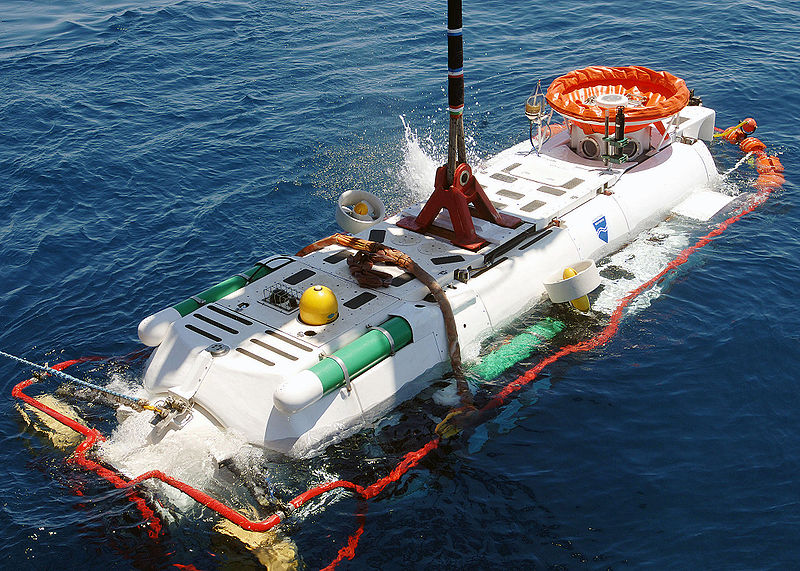ISMERLO
After the international response in the sinking of the Russian submarine Kursk, ISMERLO, or the International Submarine Escape and Rescue Liaison Office was established in 2003. The purpose of ISMERLO is to coordinate the rescue of submarines quickly. ISMERLO is tasked with locating an appropriate rescue vehicle and getting it to the disabled submarine as fast as possible.6
DSRV
 Initially canoes were made out of large logs that were hollowed out and shaped by hand.
DSRVs or Deep Submergance Rescue Vehicles are mini submarines that are used to dive down to distressed submarines, attach to the distressed submarine's hatch, and rescue a portion of the crew. Originally manned DSRVs are now frequently remotely opperated, this reduces the risk to the DSRVs crew and increases the number of sailors that can be brought back up.7
The biggest challenge DSRVs encounter is the immense amount of pressure that pushes in on their hulls at depth. For every 10 meters of depth water pressure increases by approximently one atmosphere. To counteract this submarines of all types have circular pressure hulls, this means that water pressure always presses on the hull in a direction normal to the tangent. Because of this the forces largly cancel each other out.
Very strong metals are still needed however and weight is a limiting factor. Some DSRVs, especially older models relied upon tanks filled with gasoline, which is both less dense than water and incompressable, meaning the tank holding the gasoline could be thinner than the hull of the rest of the submarine.
Initially canoes were made out of large logs that were hollowed out and shaped by hand.
DSRVs or Deep Submergance Rescue Vehicles are mini submarines that are used to dive down to distressed submarines, attach to the distressed submarine's hatch, and rescue a portion of the crew. Originally manned DSRVs are now frequently remotely opperated, this reduces the risk to the DSRVs crew and increases the number of sailors that can be brought back up.7
The biggest challenge DSRVs encounter is the immense amount of pressure that pushes in on their hulls at depth. For every 10 meters of depth water pressure increases by approximently one atmosphere. To counteract this submarines of all types have circular pressure hulls, this means that water pressure always presses on the hull in a direction normal to the tangent. Because of this the forces largly cancel each other out.
Very strong metals are still needed however and weight is a limiting factor. Some DSRVs, especially older models relied upon tanks filled with gasoline, which is both less dense than water and incompressable, meaning the tank holding the gasoline could be thinner than the hull of the rest of the submarine.
 An older technology that is coming back into use is diving bells. Diving bells are essentially large metal spheres suspended on the end of a cable. The diving bell can then be lowered onto the top of the distressed submarine. Once on top of the submarine the hatch can be opened and the crew rescued. The advantage of a diving bell is that it mechanically much less complex than a DSRV, meaning they are cheaper to produce.
An older technology that is coming back into use is diving bells. Diving bells are essentially large metal spheres suspended on the end of a cable. The diving bell can then be lowered onto the top of the distressed submarine. Once on top of the submarine the hatch can be opened and the crew rescued. The advantage of a diving bell is that it mechanically much less complex than a DSRV, meaning they are cheaper to produce.